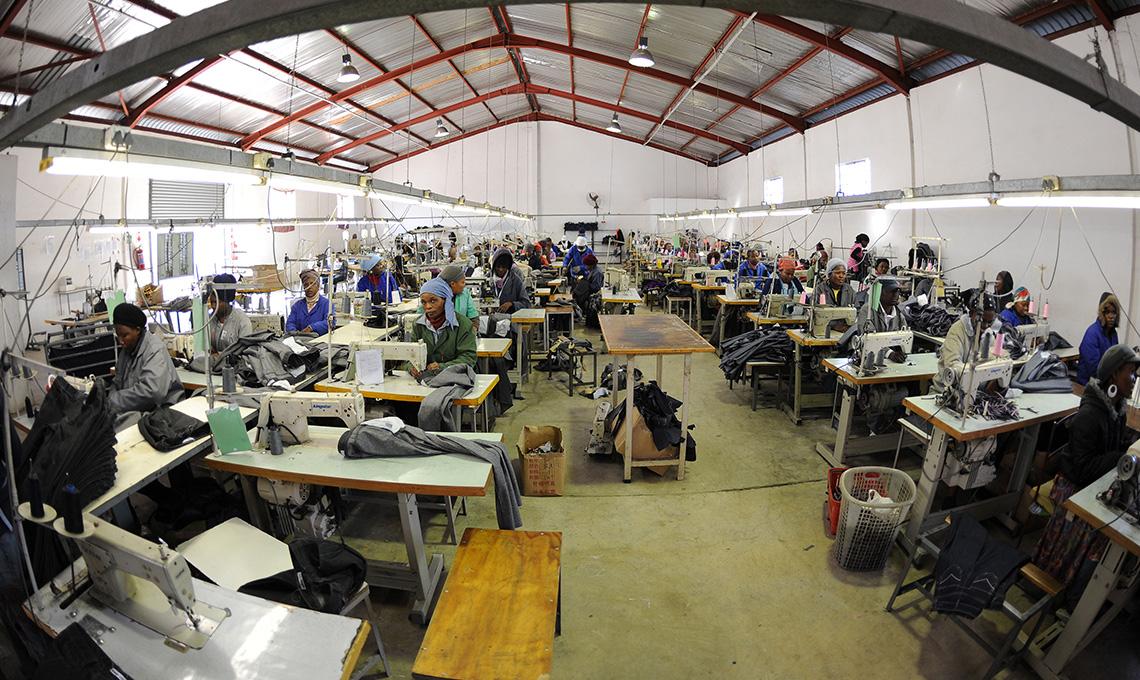Understanding the Industrial Development and Market Integration Pillar of RISDP 2020-2030.
The transformation and development of the Southern African Development Community (SADC) economy rides on a strong industrialised and integrated Region in which intraregional trade increases while the markets of the 16 SADC Member States are strongly interlinked.
In this regard, Pillar I of the Regional Indicative Strategic Development Plan (RISDP) 2020-2030 on Industrial Development and Market Integration is directed towards realising an industrialised regional economy that utilises its natural resources sustainably.
Industrial development focusing on the priority sectors of agro-processing, mineral beneficiation and pharmaceuticals is prioritised, alongside enhancing regional technological capability and capacity through science, technology and innovation.
As part of the industrialisation agenda, SADC has begun the process of identifying potential value chains in the Region, which have a specific focus on how individual and regional strengths can be leveraged for optimal benefits from both regional and global value chains.
To encourage the creation of regional value chains and participation in global processes, SADC has identified six priority areas where the value chains are being established. These are in the areas of agro-processing, minerals beneficiation, pharmaceuticals, consumer goods, capital goods, and services.
Already, agro-processing, pharmaceutical (ARVs and COVID-19 Medical Products), and leather value chains are being developed in a number of SADC Member States under the Support to Industrialisation and the Productive Sectors in the SADC Region (SIPS) programme which is supported by the European Union (EU).
SADC is developing regional value chains in the leather industry, agro-processing and pharmaceuticals as these have been given preference due to their potential for job creation.
RISDP’s Pillar I places particular attention on the sustainable development of integrated Green and Blue Economies that will generate revenue and employment. RISDP 2020- 2030 targets to continue deepening efforts towards the free movement of goods, services, and skills, with increased attention to strengthening cooperation and coordination among Member States in the tourism sector.
A key priority is ensuring macroeconomic convergence, increased financial integration, monetary cooperation, and investment. Interventions are focusing on further deepening financial integration and financial inclusion, together with increased monetary cooperation, which will undoubtedly see increased domestic and intra-regional foreign direct investment.
In line with Pillar I, notable progress has been or is being recorded in the financial integration and inclusion in the Region.
The SADC Real Time Gross Settlement System (SADC-RTGS) has lowered transaction costs as it has removed the need for correspondent banks. As of June 2021, a total of 83 participating banks, from 15 SADC Member States (except Comoros), were electronically linked to effect cross-border payments and settlements in real time. From July 2013 to June 2021, total number of transactions settled reached US$591.38 billion.
The SADC-RTGS is an electronic cross-border funds transfer system that facilitates settlement of funds within the SADC Region, in real-time. Once processed, a transaction normally settles on the same day.
Prior to the implementation of the SADC-RTGS, all transactions between SADC Member States were treated as international transactions and were processed through correspondent banking arrangements, which are costly and time-consuming. The SADCRTGS enables safe, efficient and less expensive cross-border payments within the Region.
Another positive is increased financial inclusion. The SADC-RTGS offers a strong opportunity to bring more people into the formal financial system and enables more people to use financial services through increased network access points and reduced transaction costs.
The implementation of the SADC Financial Inclusion Strategy and SME Access to Finance (2016-2020), which was approved in 2016, is ongoing. As of December 2020, 68% of adults in the Region were financially included, which is around 97 million individuals. In terms of gender split, 67% of female and 70% male. The Financial Inclusion Strategy and SME Access to Finance empowers small and medium enterprises, the youth and women by enabling them to participate in economic activities across the Region.
A number of measures are being put in place to increase intra-SADC trade, notably through the SADC Industrialisation Strategy and Roadmap 2015-2063, and the SADC Regional Mining Vision (RMV) and Action Plan 2019, which were approved in 2015 and 2019 respectively.
The decision to frontload industrialisation was taken because the previous efforts to increase intra-regional trade were hampered by the limited capacity in Member States to produce goods that can be traded equitably within the Region, and competitively within and outside the Region.
The Industrialisation Strategy and Roadmap seeks to facilitate a major economic and technological transformation at national and regional levels, through beneficiation and value addition to the Region’s diverse resources, within the context of deeper regional integration.
Industrialisation has remained the major focus of SADC economic integration. By addressing the supply-side constraints as part of the implementation of the SADC industrialisation strategy, cross-border trade continues to grow and the business environment has been improving, whereby the cost of doing business has been declining steadily and gradually, through the implementation of both hard and soft infrastructure.
The SADC Simplified Trade Regime Framework and SADC Regional Customs Transit Guarantee Regulations aimed at facilitating intra- and extra-SADC Trade were finalised in 2020.
The SADC E-Certificate of Origin (eCoO) Framework was developed and approved during the review period. The E-certificate will help to facilitate the application of the Certificate of Origin electronically, thus easing cross-border trade. The Framework will soon be piloted in six Member States — Botswana, Eswatini, Malawi, Namibia, United Republic of Tanzania and Zambia. The SADC Simplified Trade Regime Framework and SADC Regional Customs Transit Guarantee Regulations help to ease and simplify intra and extra-SADC trade, while the E-Certificate of Origin helps to facilitate the application of the Certificate of Origin electronically, thus easing cross-border trade.
The RISDP 2020-2030, through the Industrial Development and Market Integration Pillar, is transforming SADC into a fully integrated and developed Region where citizens enjoy quality life and have access to opportunities abounding from vibrant economies.


